Embracing the 'Permacrisis' Mindset: Lessons from Mathis Schulte
In a world that seems to be spinning faster than ever, there's a phenomenon that's gripping organizations and individuals alike: permacrisis. This pressing reality, introduced by Mathis Schulte, Co-Director of the Executive MSc in Change Leadership, captures a truth that resonates across every sector and every aspect of life. The challenges keep coming. There is endless disruption. Things keep evolving. You must adapt all the time. The toll on our collective resilience? It's growing by the day. The solutions? There's no one-size-fits-all approach.
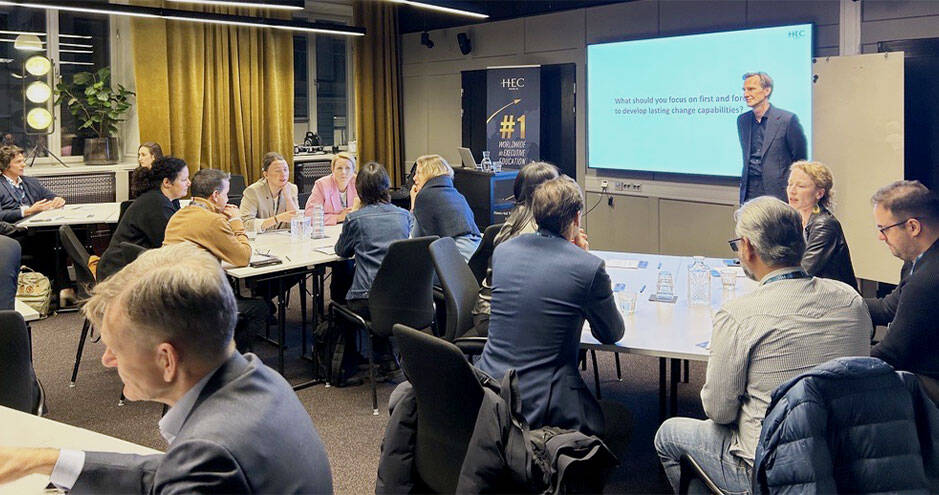
Businesses face many challenges today. These include the pandemic's effects. Also, tensions between countries, AI disruption, climate change, economic uncertainty, and rapid tech shifts.
The traditional "unfreeze, change, refreeze" steps don't work in our ever-changing world. Mathis Schulte's masterclass was a wake-up call. Leaders must develop a "permacrisis" mindset. This means embracing constant change as normal. It means giving organizations lasting abilities to deal with uncertainties. Let's explore some of the skills needed to succeed in an era of continuous crisis and change.
Some Change Models and Their Pitfalls
While structured frameworks like the Colors model and Kotter's 8-Step process offer valuable guideposts, Mathis Schulte cautions against falling into the trap of dogmatic adherence. These models risk narrowing the organizational mindset and missing innovative "out-of-the-box" solutions that may be found through more exploratory colored lenses. Adaptability itself becomes the core competency in an era of perpetual change.
The Colors of Change
Originally crafted by Leon de Caluwé and Hans Vermaak, the Colors of Change paradigm encapsulates diverse mindsets and approaches to organizational transformation.
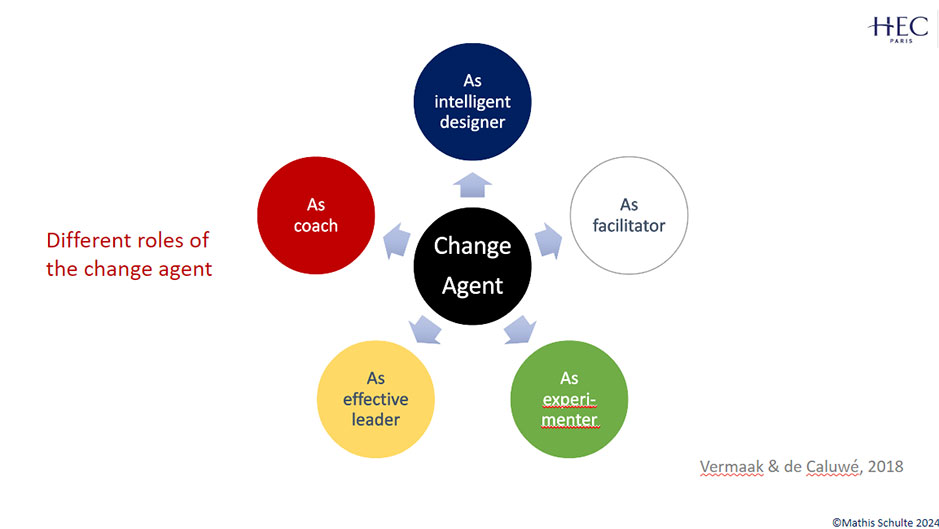
From the meticulous planning and execution of the "Blue" mindset to the human-centric "Red" focus on engaging people, each color represents a different lens through which change is perceived and acted upon.
The "Green" mindset champions experimentation, learning from failures, and an entrepreneurial spirit, while the "White" approach favors organic, bottom-up facilitation of emergent change.
While the "Colors of Change" framework provides a comprehensive lens for viewing organizational transformation, it's important to recognize the dangers of over relying on any single approach.
Take the "red" people-centric mindset, for instance. While engaging employees and cultivating intrinsic motivation through autonomy, mastery, and purpose is laudable, a hyper-focus on this approach can have unintended consequences.
Early attempts at radical employee empowerment, like Volvo's semi-autonomous work groups in the 1980s, were often short-lived due to managerial concerns over loss of control. Even today, the shift to remote work has reignited debates around monitoring and trust issues when granting unfettered autonomy.
Moreover, research indicates that while high-performers may thrive with increased autonomy, some employees actually prefer more structured routines and clear directives. The "one-size-fits-all" autonomy models can alienate this latter group.
The rise of AI also exemplifies a double-edged sword - while potentially augmenting creativity for skilled knowledge workers, it may displace those performing routine tasks who lack the capabilities to move into higher-value roles.
The Kotter approach to change management
While Kotter's 8-Step process offers "some beauty" in breaking down change into manageable components, Professor Schulte cautions against rigidly adhering to the prescribed steps without room for learning.
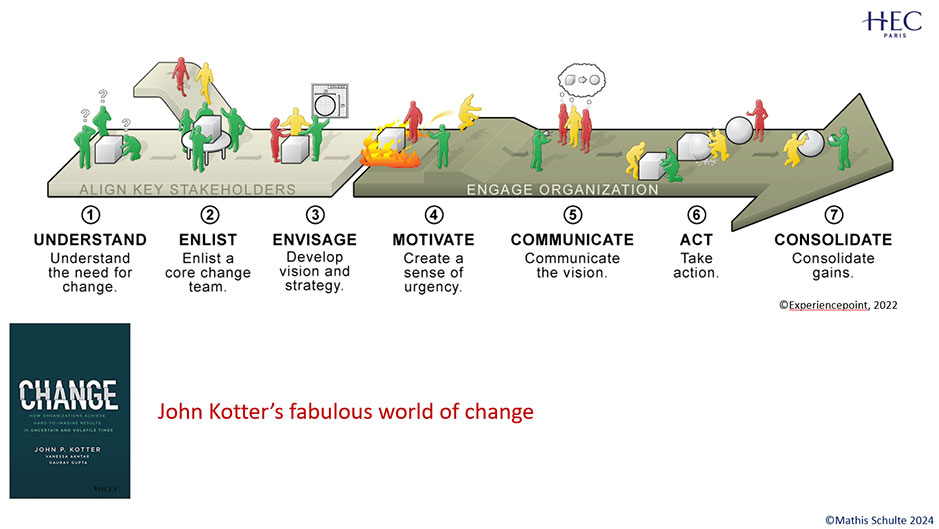
"Especially with the complexity we face nowadays, it becomes challenging," he emphasized.
Professor Schulte shared the example of a motorcycle company trying to rush an electric scooter to market by taking their existing premium model and simply "replacing the tank and engine with batteries" - checking all the Kotter boxes like establishing the vision and urgency.
However, when line managers soon hit technical hurdles, their "sugar-coated" memos up the chain suggesting "some problems...some concerns" were further diluted, as "middle management didn't want to spoil the party" for leaders sold on the green vision.
With a "pro-sac leadership" culture of "believing their own rhetoric," the company missed chances to adapt. "They basically gave up...did the minimum just to get this thing out, but didn't believe in it at all."
Lacking mechanisms to genuinely incorporate front-line learning, the flawed product flopped while nimbler competitors succeeded. Mathis Schulte argues this inability to course-correct is a pitfall when change models provide "no room for experimentation where people can admit that they fail so that we can learn."
Technical vs Adaptive Challenges
Professor Schulte emphasized distinguishing between "tame" technical problems with clear solutions, and "wicked" adaptive challenges requiring exploration.
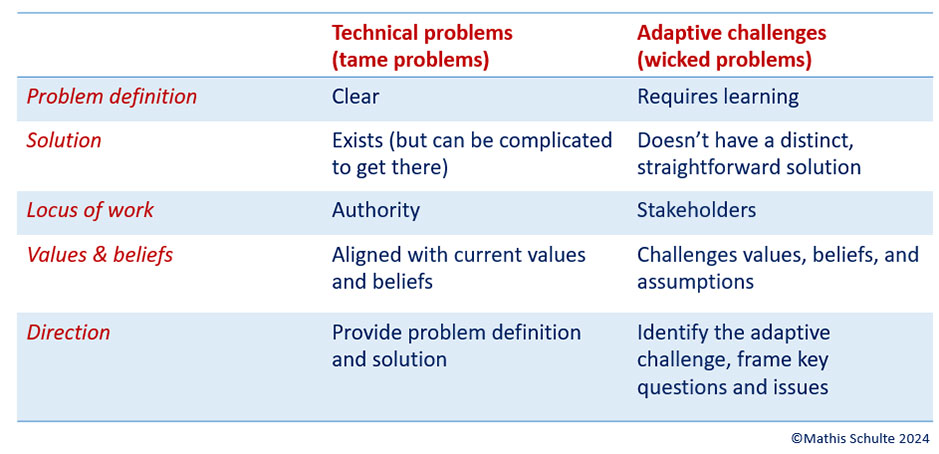
"Brain surgery is tame - we know how to approach it systematically. But most organizational hurdles are adaptive - the path forward is unclear."
He cited COVID as a prime "wicked" problem wherein experimentation and multi-stakeholder collaboration were essential, contrasting it with Volkswagen's “technical issue” mindset regarding the emission crisis, which overlooked deeper cultural issues.
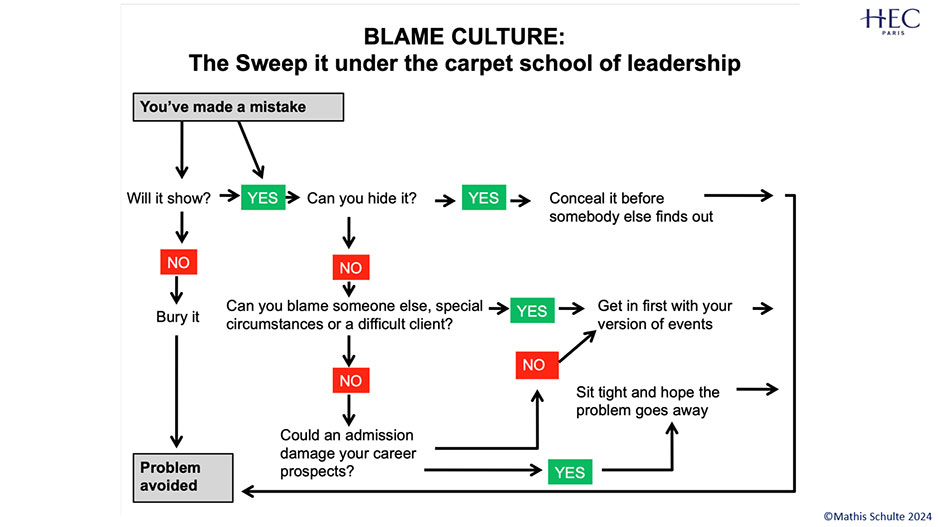
"This blame-first mindset cripples organizations," Professor Schulte pointed out, illustrating the common thought process prevalent within many organizations.
"If you have that mindset, then obviously you're missing sometimes the bigger point and you're trying to fix things that are not being able to be fixed."
Redefining Leadership to Thrive in Permacrisis
Professor Schulte argued that traditional "vision and change management" approaches fail with complex, shape-shifting challenges requiring real-time learning and adjustments. "Heroic, top-down leadership is disastrous for the perpetual flux of permacrisis."
How adaptative leadership thrives through change
Mathis Schulte advocates redefining leadership as "an activity of mobilizing people to collaboratively tackle adaptive challenges."
True adaptive leadership creates psychologically safe environments for voicing concerns, experimenting, and learning - not merely executing plans.
"At Zappos, they all brought their plans, and they're small talk and love each other. But if you talk to one, you know what the other person knows", Professor Schulte recalled.
He contrasted it with Pixar's creative approach of openly seeking criticism—"a powerful display of adaptive leadership that channels transformative dialogue from the bottom-up."
The power of vulnerability in leadership
Mathis Schulte shared an intriguing anecdote about a Japanese CEO. "The CEO started the meeting by discussing how his team managed during the recent COVID crisis rather than diving directly into strategic matters," Professor Schulte explained.
"He spent the first half-hour of the meeting talking about personal challenges, including his difficulties with using modern technology like iPhone apps."
This approach might seem trivial initially, as the CEO even asked for help with WhatsApp, turning the meeting into an impromptu tech support session. "It appeared aimless as if the meeting was going nowhere. But it was brilliant," Professor Schulte observed.
"By admitting his own technological challenges, he empowered his staff, who felt knowledgeable enough to assist him."
This tactic effectively lowered the barriers between the CEO and his team. "After about 45 minutes of these discussions, he subtly shifted the conversation towards the company's strategy. By then, the atmosphere had changed; the team felt more comfortable expressing honest opinions about strategic directions."
That’s an eye-opening story on how leadership can foster a culture of openness and trust. "It demonstrates that sometimes, leaders need to show vulnerability and engage on a personal level to truly open lines of communication and get to the heart of critical business discussions.”
The Positive Deviance Approach
Rather than constantly seeking external solutions, Professor Schulte encouraged tapping into "positive deviants" within organizations – teams defying constraints through innovative practices. Companies can unlock fresh solutions aligned with their cultures by studying these outliers.
"Some teams are thriving, some teams are happy, everything works great, there are no free riders, whereas others are really struggling within the same company," Schulte pointed out, using remote work as an example.
"So, understanding why it is working in that team? It might be the individuals, the composition, but it might be something in how they actually meet when they have certain routines, and so on."
This positive deviance approach has proven powerful in contexts far beyond the corporate world. He cited Save the Children's efforts to combat childhood malnutrition in rural Vietnam. Rather than introducing external resources, the nonprofit identified "very poor families who had managed to avoid malnutrition" through unconventional local practices.
These outlier "positive deviants" were gathering tiny shrimps, crabs, and greens to supplement children's meals—free, readily available foods that defied village norms, deeming them "inappropriate." By demonstrating the value of these ingredients and frequent feeding, 80% of participating children overcame malnutrition within two years without massive outside investment. "The community, in other words, cures itself.”
"The positive-deviance approach creates indigenous solutions, it offers important advantages" like rapid progress, sustainable benefits, and scalability across contexts from malnutrition to corporate change.
"That's where you'll likely discover the keys to creating real change—a change that the organization embraces and brings immediate and sustainable benefits."
A Multi-Faceted Approach for Permacrisis
Professor Schulte asserted that no single change philosophy adequately equips organizations for perpetual flux. Instead, he advocated a multi-colored approach blending methodical planning, human-centricity, experimentation, and adaptive leadership as situations demand.
The overall goal is to build a culture that can continuously learn, innovate, and adapt rather than just hierarchically implement preset change programs.
Through redefining leadership, fostering psychological safety, and tapping positive deviants and diverse philosophies, organizations develop the resilience to outmaneuver perpetual upheavals.
As the world accelerates, HEC Paris Executive Education’s custom programs provide an invaluable compass based on knowledge from experts such as Mathis Schulte. Their battle-tested perspectives equip executives to future-proof their organizations by deeply grasping permacrisis realities while proactively developing critical capabilities to drive perpetual transformation successfully.